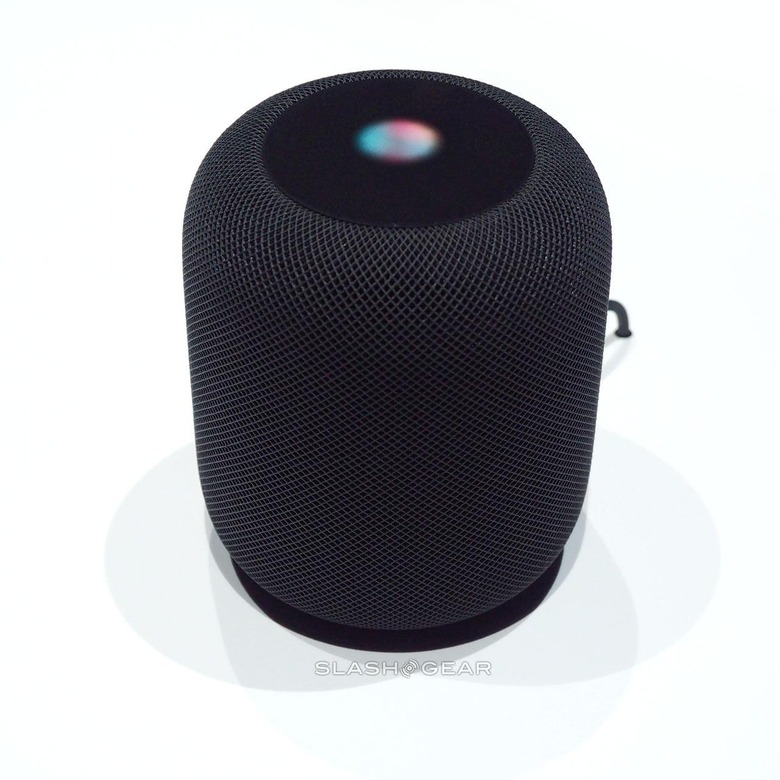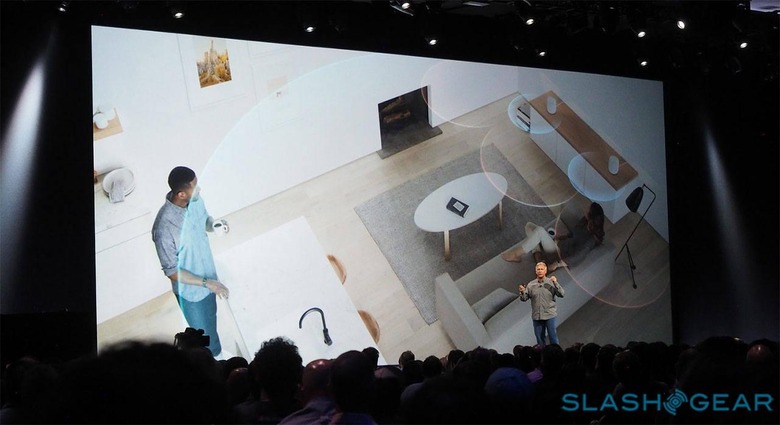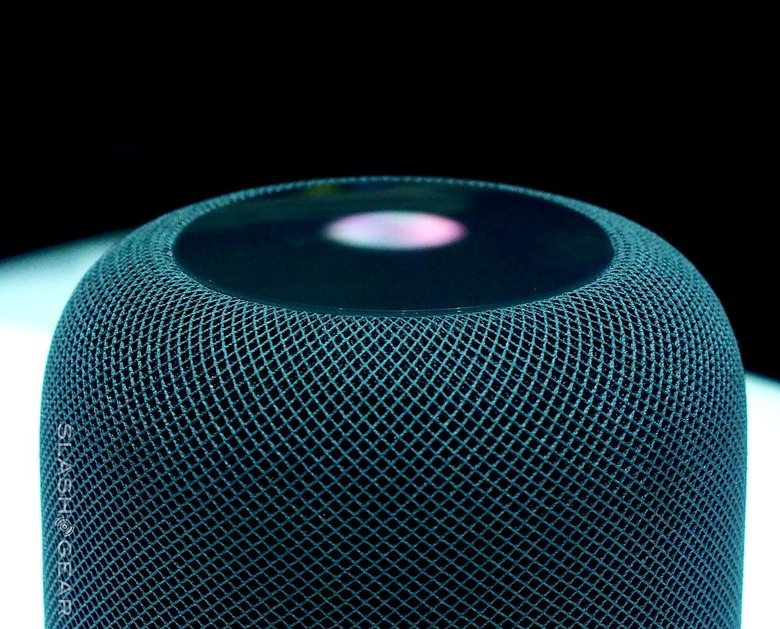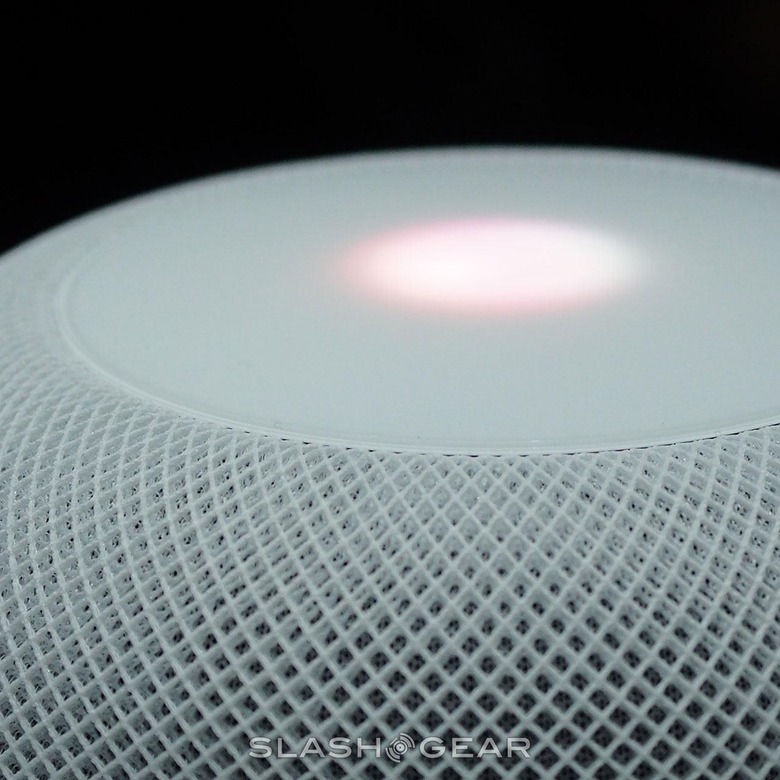Apple's HomePod Sounds Terrific - But The Siri Speaker Has A Big Issue
Surprise: the HomePod may be Apple's physical embodiment of Siri, but there Cupertino firm would really rather you think of the smart speaker as a music system first and foremost. Described as a blend of Sonos and Amazon Echo during the WWDC 2017 keynote, here Siri is really the gateway rather than the main event.
I had the opportunity to audition HomePod alongside the same two devices Apple contrasted the Siri speaker with on-stage during the keynote. On the one hand, there's one of the kings of streaming speakers, the Sonos PLAY:3. Cheaper, at $299, than the HomePod, its been around for some years now, and made itself a mainstay of the modern connected home. However, at least until Sonos' deal with Amazon to add Alexa control, it lacks any sort of intelligence.

That intelligence is something Amazon's Echo has in spades. The tall, cylindrical smart-speaker is even cheaper than the PLAY:3, and like Apple with the HomePod, Amazon promises 360-degree music to go with the circular footprint. Problem is, while it's certainly one of the better-sounding smart-speakers on the market, that doesn't necessarily mean it can live up to a dedicated music system.
Despite the small, squat barrel shape – which put me in the mind of the classic "Pop-Up Pirate" game, only stabbing it through with little plastic swords would probably void the warranty – the HomePod has volume and clarity in spades. Unfortunately I wasn't able to run any of my own music through the three devices, but a short playlist hit their core talents – or underscored their weaknesses.
SIA's "The Greatest" put the trio through thumping bass which couldn't be allowed to drown out the vocals; Nora Jones' "Sunrise" switched things up, focusing instead on the vocals atop their acoustic background. Stevie Wonder's "Superstition" is a fiercely layered affair, distinctive vocals sandwiched with multiple instruments. Finally, Kendrick Lamar's "DNA" cranked up the bass even further, shot through with sparkling high-hats.
SEE ALSO: Apple HomePod release date and details
Even away from the hubbub of the demo floor, it's far from the auditioning room environment you'd need to truly sample the HomePod. Still, there are some clear takeaways. For all Amazon's boasts, the Echo sounds tinny and hollow in comparison to its more music-centric rivals. Bass lacks a true thump, while the top-end can get hissy and weak.
In contrast, the PLAY:3 sounds rich and warm, but there's a clear sweet-spot at which its delivers its best. Step away from that forward-facing cone and the strength ebbs away noticeably. In the bass-heavy "DNA" it lacked punch: not for nothing does Sonos recommend its wireless SUB.
Consider me pleasantly surprised by the HomePod, then. With a wider soundstage than the PLAY:3 there's no apparent sweet-spot. Instead, as I walked around the room, there was no real difference in how the music sounded. The rich layers of "Superstition" were even more impressive. It's a cliché to suggest that each musician and singer felt individually placed in the space, but Apple's speaker certainly gets closer to that than you'd expect even for a $349 device.

The magic, Apple says, is in the automatic calibration. Plug the HomePod in and it runs through a configuration test, playing a series of tones and then, by listening to them back, figuring out where the walls are and how to adjust its various speakers and EQ to get the best possible playback. If you place HomePod in the center of a room rather than against the wall or on a bookshelf, meanwhile, you'll get full, 360-degree consistent sound all around it.
Add a second speaker, and the two will automatically configure themselves for stereo. Nobody is saying whether you'll be able to have more than two per zone – unlike, say, Sonos where you can group as many speakers as you like – but even with just a pair, the Eagle's "Hotel California" had presence that belied the HomePod's scale.

Like the AirPods, I suspect the HomePod will divide opinion like certain Apple products seem destined to from launch. On the one hand, it's clearly designed to appeal to the Apple faithful. The tight integration of Apple Music and Siri's new freeform interactions for discovering music should make for a simple transmission from your iPhone to your HomePod.
On the flip-side, however, there's not much here for you if you're not already within the Apple ecosystem. Apple Music may be baked in, but that's your lot: if you're a Spotify subscriber, or if you use Pandora, or indeed any of the various other competing streaming music services out there, you're out of luck. Amazon Prime Video may be coming to Apple TV, but I wouldn't hold your breath for Amazon Prime Music to land on HomePod any time soon.

There is, of course, time for Apple to tweak what HomePod offers. Indeed, there are plenty of lingering questions. Nobody can tell me what happens if you have an Apple Music family plan, whether you'll be able to switch between them though the HomePod. Similarly, it's unclear if Siri will be a single identity shared by every user in the home, or if the agent will recognize who is talking and tailor the results to suit the audience.
I was unable to try the new, music-specific Siri controls, meanwhile, and indeed wasn't in a position to ask the Apple agent anything, whether simple search questions or HomeKit commands. Siri's reputation among the various smart assistants isn't, frankly, the best; Apple touched upon its improvements in the WWDC keynote, but only time will tell if the polish translates day to day.
Those questions will have to wait until later in the year. Apple HomePod launches in December, with an individual speaker priced at $349.
